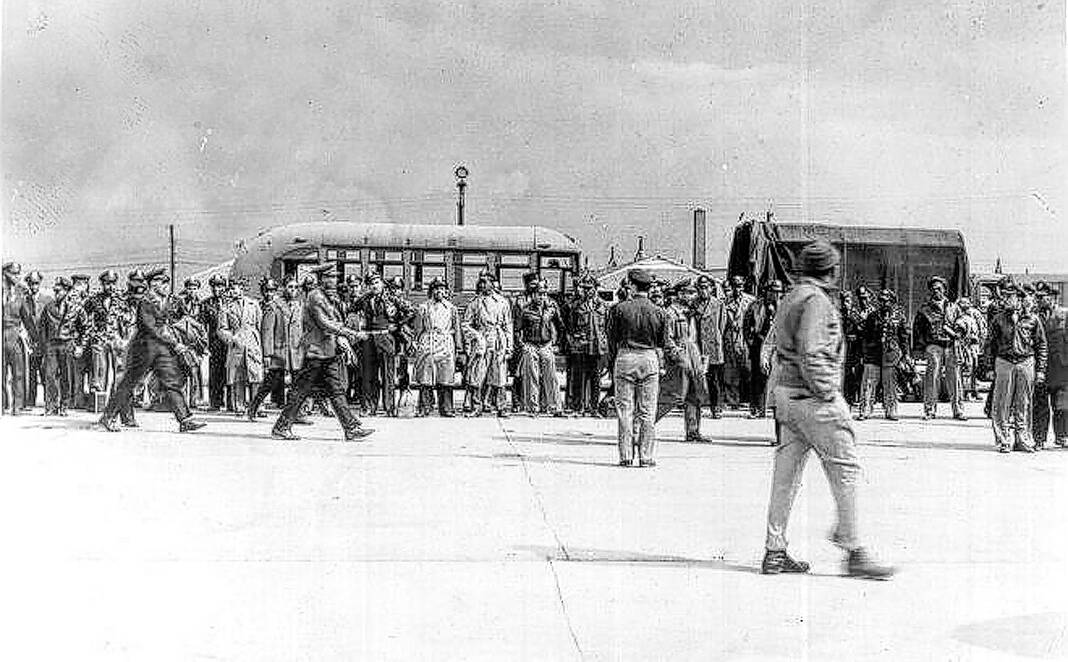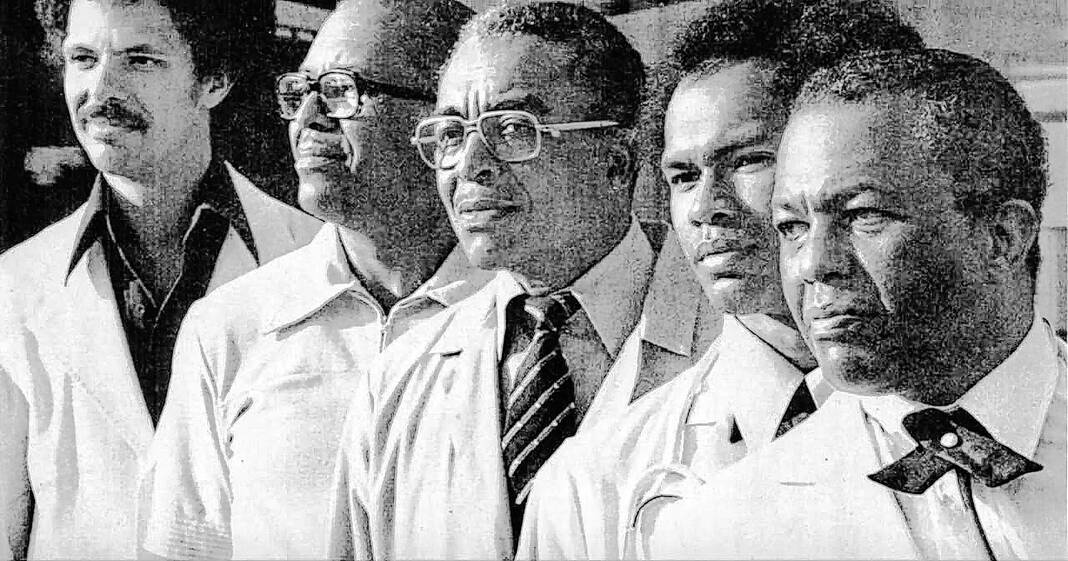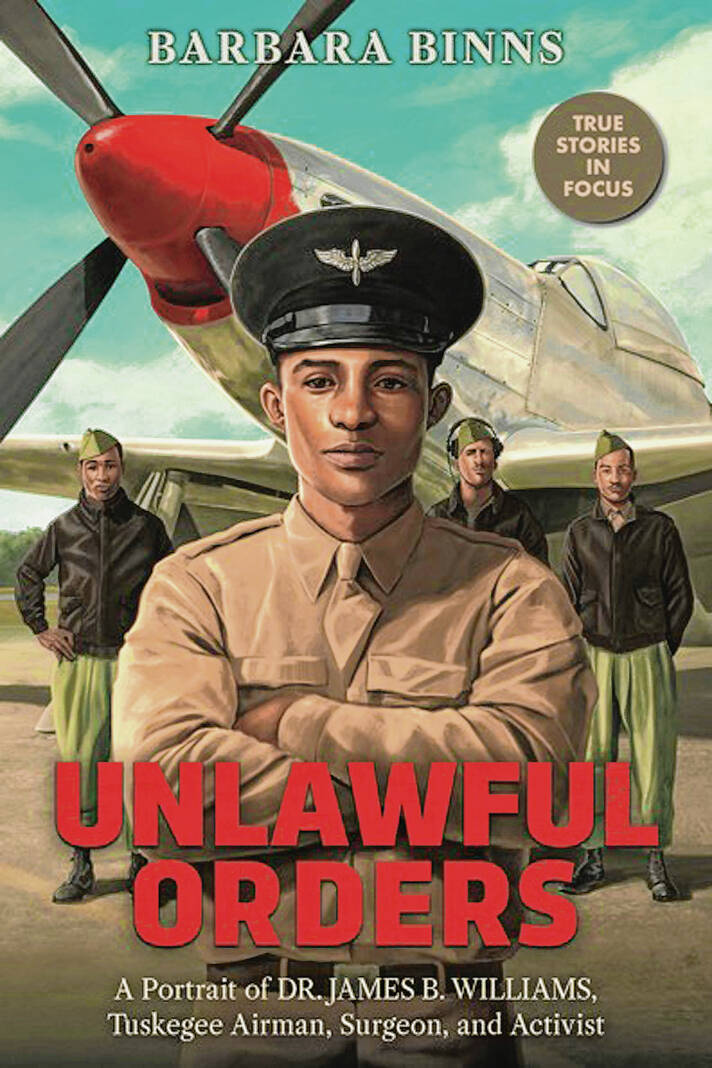About five years ago, Barbara Binns became interested in educator Clara Belle Williams and wrote about her for a book that included Mother’s Day stories.
In her research, Binns learned Williams had three sons who all became doctors, so she included lines about each of them in the story.
While studying one of her sons, James B. Williams, she saw the words “Freeman Field.”
“That pulled me in, and the next thing I knew, I was busy studying about Freeman Field,” the Chicago, Illinois-based author said.
It was a place she had never heard about before, and she said her jaw dropped when she realized Williams was at the Army airfield in Seymour in 1945 when the Freeman Field Mutiny took place.
That series of incidents involved Black members of the 477th Bombardment Group attempting to integrate an all-white officers’ club, resulting in 162 separate arrests, some of them twice.
Ultimately, their actions led to the desegregation of the U.S. military.
“Although I did write that piece about the mother, eventually, I fell in love with the entire story and the entire family,” Binns said. “I had just completed a middle grade fiction story and had time on my hands. I started looking more and more into James Williams. I never actually liked history when I was in school, but I felt like writing about him.”
In 2019, she started work on her fourth book, “Unlawful Orders,” a portrait of Williams, who was a Tuskegee Airman, surgeon and activist. She finished it about a year later and then sent it to a publisher.
On Oct. 18, it will be released.
While her first three books were fiction, Binns chose to go the nonfiction route this time.
“I actually thought for a while I would do a made-up story about the Freeman Field event, and then I said, ‘You know, the reality is something that if I put this in a fictional story, no one would believe it,’” she said. “To me, it was just a bigger piece, the real version.”
She also became fascinated by Williams because as an adult, he worked at Chicago hospitals near where she lives.
“I kept thinking, ‘I could easily as a child have walked right past him and never known that I’m walking past such a person who has been involved in so many influential things,’” Binns said. “It never occurred to me as a child that the people around me might be someone famous or at least important.”
In the book, Binns presents the inspiring story of Williams in his struggle for racial equality in the field of battle and the field of medicine.
The Tuskegee Airmen heroically fought for the right to be officers of the U.S. military so they might participate in World War II by flying overseas to help defeat fascism.
After winning that battle, however, they faced their next great challenge at Freeman Field, where racist white officers barred them from entering the prestigious officers’ club that their rank promised them.
When asked to sign a direct order formalizing racial segregation at the airfield, Williams and his fellow airmen faced a choice: Disobey an order and risk execution or betray their conscience.
Williams refused to give in to the bigotry at Freeman Field. Known as “J.B.,” he grew up the son of sharecroppers, but his loving family and insuppressible intellect drove him to push boundaries placed on Black Americans in the early 20th century.
His devotion to the betterment of others took him from the classroom where he learned to be a doctor to serving as a medic in the U.S. military and eventually joining the elite Tuskegee Airmen, where he fought to change the minds of all who believed Black men couldn’t make good soldiers.
J.B.’s greatest contribution came in his role as a doctor and civil rights activist after the war, where he continued to push past injustices placed on Black Americans.
Binns said she was intrigued by the Tuskegee Airmen at Freeman Field because the mutiny incident came before Rosa Parks became an icon in the civil rights movement.
“This happened before that. It’s not like they were following her lead,” Binns said. “They made this decision, and they did this on their own.”
While writing the book, Binns was able to correspond with Williams’ son, James Williams Jr., who also became a doctor, and have him provide feedback. She was happy about it all being positive.
“He is the nicest, friendliest man,” she said. “He is retiring, and his son is on his way to medical school. This is a family of doctors and educators, so Grandma was the educator, Grandpa a civil rights worker. They produced these three doctor sons, and they have produced other doctors and educators and professional people.”
Having a finished copy of “Unlawful Orders” in her hands was “an astonishing feeling,” Binns said.
“I had done fiction before, but this is my first nonfiction, and this is the first time I can go to someone and say, ‘No, this is a real person. I did not make this person up in my head,’” she said.
“I pored, pored over information to find out about (Williams) and his contemporaries and things like that,” she said. “I did research, and in the process, I learned so much that I’m just thrilled with the hope and the prayer that kids will want to read this and say, ‘Wow! I didn’t know about that.’”
All four of her books have targeted middle school-age kids, which is interesting because when she first started writing, she wanted to write adult romance stories.
She attended some lectures about why kids don’t read and thought, “Let me write something that might hit a reluctant reader.”
“Right from the beginning, my fiction as well as this one have always been that whole ‘What about a kid who isn’t enthused about reading? Can I put something in their hands that will make them want to keep turning the pages?’” she said.
“Even if they put it down to go out and play a baseball game, they will want to come back and say, ‘OK, now let me see what happens next,’” she said. “The goal for all of the stuff that I write is to reach not the kid who loves books, but the kid who doesn’t necessarily love books, that they might love the stories that I write anyway.”
On a personal level, Binns said she likes this book because it got her back into research. Her eclectic career path has included work as a clinical chemist at the University of Chicago Hospitals, a computer analyst for AT&T and now as an author.
“I discovered Google will get you started, but the lucky thing is because of the timing, because some of these men ended up going home as hometown heroes … there was a lot of information that I possibly would not have found about any Tom, Dick or Harry,” she said. “Many of them in their hometowns got things like newspaper articles, and some of them even created oral histories, so I could actually listen to their own words as they spoke about what events were like.”
As a bonus, Williams’ daughter worked in the news business.
“So she also had written some things about her family,” Binns said. “I was like, ‘Yes, thank you so much.’”
In the book, Binns said she encourages kids to talk to the older people in their lives because many have done great things.
“Get to know them before it’s too late because by the time I knew about (Williams), he was already dead,” she said, as he died Nov. 23, 2016, at 97. “By the time I finished this (book) … I felt like I was a scientist or something uncovering a new element, a new principle of all mankind. I’m waxing poetic because I just felt really good bringing this unknown person to life from the pages.”
At one point recently, Binns was driving on Interstate 65 and saw a sign that said “Seymour.” A few miles down the road, it hit her why that sounded familiar. It’s where Williams served and where the Freeman Field Mutiny took place.
“I actually hadn’t been there while writing the story, so I had to get off the highway just to go through it because I’m on hallowed ground, my goodness, a place that was so close to me and that I had never, ever heard about my entire life until I started studying for this,” she said. “I had never heard of Seymour, Indiana, or Freeman Field or anything, so now, it’s hallowed ground.”






